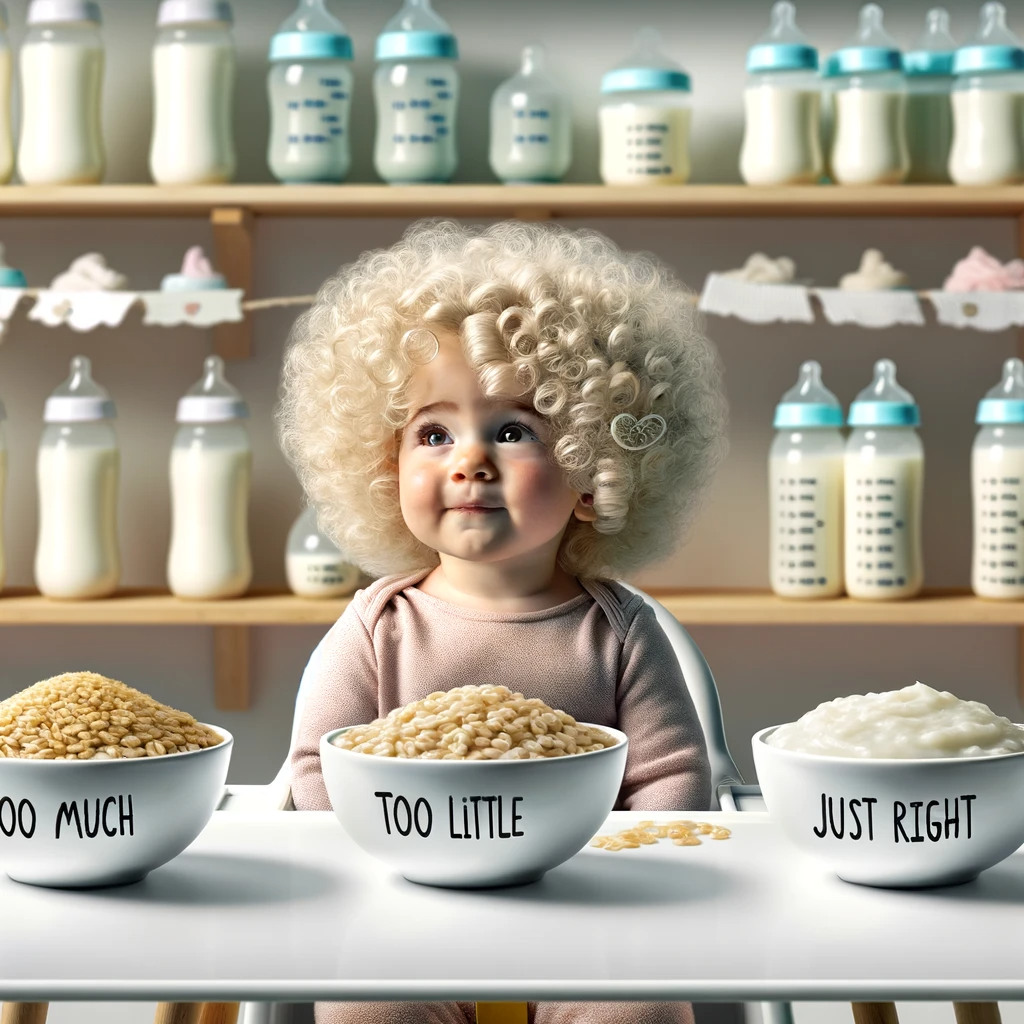FAST AND FREE SHIPPING ON MULTI-PACKS
FAST AND FREE SHIPPING ON MULTI-PACKS
Goldilocks and the Just-Right Iron Formula: A Tale of Infant Nutrition

Once upon a time in the world of infant nutrition, a question loomed large: How much iron is just right for a baby's formula? This story, reminiscent of Goldilocks finding the perfect porridge, bed, and chair, is about finding the ideal iron balance in infant formula.
In the first chapter of our tale, we learn that babies are born with a natural store of iron, much like a little treasure chest filled with nutritional gold. This precious reserve supports baby's growth and development. But, as in any good story, there's a twist: by around six months, this iron stash starts to dwindle, leaving our tiny heroes in need of more external sources of iron.
Enter the stage 2 and follow-on baby formulas, the knights in shining armor for European babies. These formulas are crafted to replenish iron levels, providing not too much and not too little, but rather just the right amount of iron. It's like Goldilocks finding the third bowl of porridge, just when her tummy starts to rumble again.
However, not all is smooth in the kingdom, especially when it comes to higher iron formulas sold in the US, including Kendamil Organic. Newly published research, led by researchers from the University of California San Diego School of Medicine, has revealed that too much iron, like too hot a porridge or too hard a bed, is likely harmful in normal, healthy, non-anemic babies. Their study found that adolescents who were fed high-iron formula as infants showed less prowess in problem-solving, information processing and quantitative reasoning skills and worse motor skills than those who were fed regular formula (i.e. lower iron content).
Venturing across the ocean to the United States, the story takes a twist. Here, the approach to infant nutrition is akin to a "one stage fits all" philosophy. Unlike the European narrative where the story of iron intake evolves with stages, in the U.S., the story remains quite linear. Researchers and scholars are now stirring the pot, suggesting that nonanemic American infants might be getting TOO MUCH iron. A striking contrast is revealed in the chart below: top U.S. baby formulas contain 1.8 mg of iron per 100 kcal of formula, significantly higher than PRE and stage 1 European formulas, which contain about 50-60% less iron.

The moral of our story? Like Goldilocks, parents must find the balance that's just right. It's important to monitor a baby's iron intake, ensuring it's not too low, nor too high. Just as Goldilocks eventually found the perfect porridge, chair, and bed, the quest for the perfect iron balance in infant nutrition continues, guided by ongoing research and loving care.
And so, our tale concludes with a reminder: in the world of infant nutrition, finding the 'just right' is key – a lesson Goldilocks would surely endorse.
Subscribe
Sign up to get the latest on sales, new releases and more …
